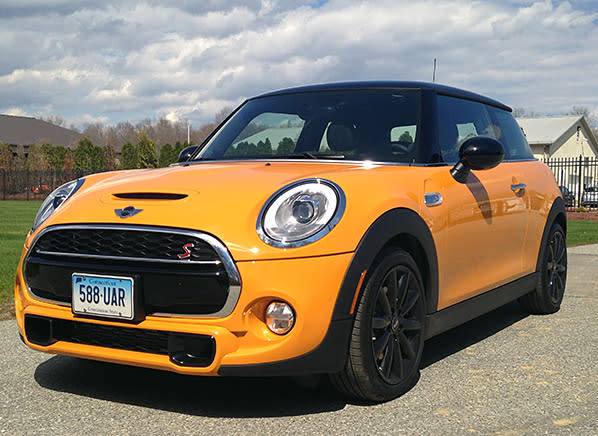New Mini Coopers get worse mpg than thought

For the fifth time in four years, an automaker has had to revise official government fuel economy labels downward as the Environmental Protection Agency tightens its oversight of fuel economy testing. The latest vehicles to receive a mandated window sticker update are the Mini Cooper and Cooper S hatchbacks.
The base Mini Cooper hatchback is down 1 mpg across the board from the car’s original ratings, now rated at 32 mpg overall with its automatic transmission. With a manual transmission, it falls short 2 mpg on the highway, but still falls just 1 mpg overall.
The sportier Cooper S automatic dropped 3 mpg on the highway, from 38 mpg to 35, and 1 mpg in the city. Overall fuel economy edged down from 31 to 30 mpg. Manual-transmission Cooper S models followed suit, falling 4 mpg on the highway from 38 to 34 mpg, and lost 1 mpg overall.
This brings both cars closer in line with what we got in our Consumer Reports on-road testing. Our base Mini Cooper with automatic got 31 mpg overall, and our Mini Cooper S with a six-speed manual transmission, 30 mpg.
In a written statement, a Mini spokesman, Rob Duda, said: "This adjustment was made as the result of retesting models following notification by the EPA that road load testing for one model had delivered different results. Engineers worked closely with the EPA to incorporate these findings into MINI’s computer simulation testing.
"While this necessitates change, the 2014 MINI Hardtop still delivers outstanding fuel efficiency. We have sent new labels for 2014 models in stock to our dealers."
Overall mpg comparison | |||
|---|---|---|---|
Mini Cooper (auto.) | 33 | 32 | 31 |
Mini Cooper (man.) | 34 | 33 | — |
Mini Cooper S (auto.) | 31 | 30 | — |
Mini Cooper S (man.) | 29 | 28 | 30 |
It’s not surprising that the Minis were susceptible to inflated mpg estimates. Both base and S models use small, turbocharged engines, which as a category have not lived up to their EPA estimates in Consumer Reports’ road testing. When we studied 315 cars we’ve recently tested, we found that 28 percent of cars with such small turbocharged engines fell short of their EPA fuel economy estimates by 10 percent or more.
Automakers are adopting small turbocharged engines because they use less gas when power needs are minimal. When the driver demands more power, the turbocharger kicks in to deliver the boost, but this also uses more fuel.
In our testing, we’ve found that such engines rarely deliver enough power when the turbos are not in use. So in the real world, they use more power than is required for EPA tests. The EPA tests, originally designed in the 1970s, use relatively low speeds and require only tepid acceleration, so the turbochargers are rarely needed.
The problem goes beyond turbocharged cars. While our study found that 90 percent of cars fell within one or two mpg of their EPA estimates, hybrids as a class were even more likely to fall short of their EPA fuel economy estimates in our testing, with 55 percent falling at least 10 percent short.
Consumers rely on EPA fuel economy estimates, printed on new-car window stickers, to gauge whether they can afford a new car’s fuel bills, as well as to compare among models. Shortfalls make false promises, and may give shoppers a skewed impression especially when they're not even across models. In addition to stepping up audits of its existing tests, the EPA is considering updating its testing methodology to better reflect the performance of modern technology such as hybrids and turbos.
In the meantime, we’re happy to see these audits bring window stickers at least closer in line with the mileage consumers may actually see on the road.
—Eric Evarts
More from Consumer Reports:
Top scoring cars in Consumer Reports' tests
5 best used cars for teen drivers
How to choose long lasting tires
Consumer Reports has no relationship with any advertisers on this website. Copyright © 2006-2014 Consumers Union of U.S.
